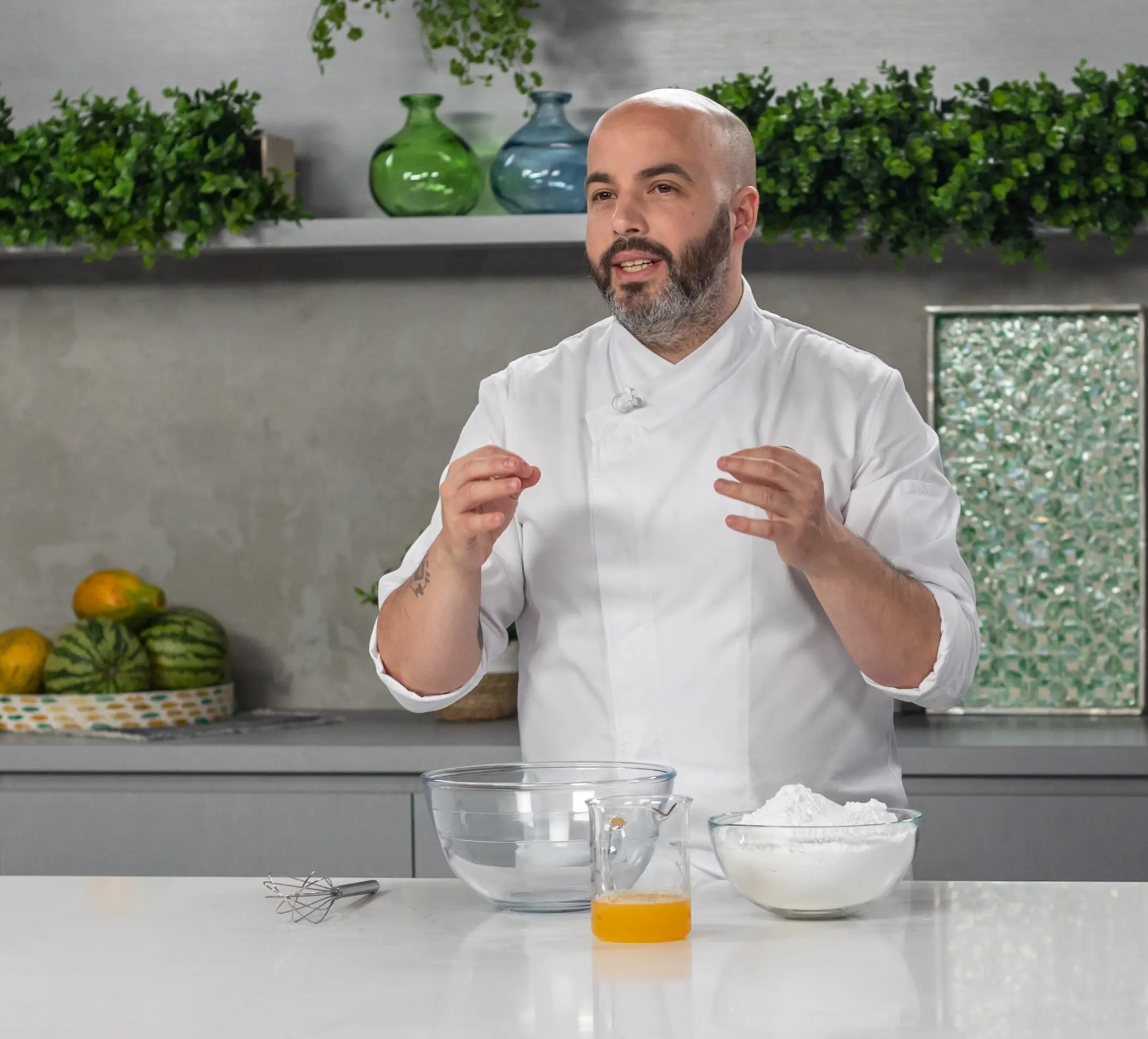What Is Gelatin?
Gelatin is a protein derived from animal collagen, typically from beef or pork. It’s a versatile ingredient that creates smooth, melt-in-the-mouth textures. Gelatin is used in a variety of recipes, from creamy desserts like panna cotta and mousse to glazes and jellies.
- How It Works:
Gelatin dissolves in warm water and solidifies as it cools, creating a soft, delicate gel. The great thing about gelatin is its ability to melt again when heated and reset upon cooling—this feature gives it flexibility in many culinary applications.
- Gelatin’s Texture:
Gelatin provides a smooth, wobbly texture that’s light and creamy. It's ideal for desserts where you want a soft set, like mousses, bavarois, or jellies. The signature characteristic of gelatin-based desserts is that they melt in your mouth, offering a luxurious eating experience.
- When to Use Gelatin:
Gelatin is perfect for dairy-based desserts, light custards, and anything requiring a delicate and elastic set. Its melting point is close to body temperature, which adds to its pleasant mouthfeel.
What Is Agar?
Agar, on the other hand, is a plant-based gelling agent made from red algae. This makes it a popular alternative for those looking to avoid animal products, making it a great option for vegan and vegetarian recipes.
- How It Works:
Agar gels when it cools down, just like gelatin, but it needs to be boiled in liquid to activate. Once set, agar does not melt at room temperature like gelatin. This makes it more suitable for dishes that need to hold their shape in warmer conditions.
- Agar’s Texture:
Agar creates a firmer, more brittle texture compared to gelatin. Its set is much stronger and less elastic, which may not be ideal for soft, creamy desserts. However, this firmness can work well in specific applications like firm jellies or layered desserts where a distinct structure is needed.
- When to Use Agar:
Agar is perfect for recipes that require a firmer set, like fruit gelées, jellies, or even plant-based panna cotta. Its higher melting point makes it a great choice for recipes that need to hold up under heat or for presentations that require a stable, firm texture.
Key Differences Between Gelatin and Agar
- Origin: Gelatin is animal-based, while agar is plant-based, making agar a popular choice for vegan or vegetarian baking.
- Setting Temperatures: Gelatin sets at cooler temperatures and melts when warmed up, while agar sets at a higher temperature and remains stable even in warmer conditions.
- Texture: Gelatin gives a soft, melt-in-your-mouth texture, whereas agar produces a firmer, more brittle gel.
- Activation Method: Gelatin dissolves in warm water, while agar needs to be boiled in liquid to activate its gelling properties.
- Versatility: Gelatin’s flexibility allows it to be used in a wide range of creamy and soft desserts. Agar, while great for firmer gels, may not provide the same melt-in-your-mouth experience as gelatin.
How to Substitute Gelatin with Agar
If you’re converting a gelatin recipe to use agar, keep in mind the following:
- Ratio: Agar is much more potent than gelatin, so you only need about one-third of the amount of agar compared to gelatin. Typically, 1 teaspoon of agar powder can replace 1 tablespoon of gelatin.
- Preparation: While gelatin can be dissolved in warm liquid, agar must be boiled for about 5 minutes to fully activate its gelling properties.
- Final Texture: Remember, the texture will be different. Gelatin provides a more delicate, flexible gel, while agar offers a firm, almost brittle set.
Which Gelling Agent Is Right for You?
For Soft, Creamy Textures: Choose gelatin for dishes like panna cotta, mousse, or any dessert where a melt-in-your-mouth feel is desired. Its soft set and smooth texture make it a favorite for creamy, dairy-rich desserts.
For Vegan and Heat-Resistant Gels: Use agar if you’re working on vegan recipes, need a firmer texture, or want your dessert to hold up in warmer conditions. It’s ideal for fruit-based jellies, firm gelées, and dishes that need to maintain a strong structure.
In conclusion, whether you’re looking for the creamy softness of gelatin or the firm stability of agar, both gelling agents offer unique characteristics that can enhance your pastry creations. Understanding how each works allows you to choose the perfect one based on the texture and presentation you want to achieve in your desserts.
Ksenia Penkina Teaches Glazing
The Glazing Queen herself teaches you extensive theory, science, and every aspect of creating the perfect mousse cake, including mousses, sponges, crunches, inserts, and, of course, glazing effects. Learn with Ksenia Penkina.
September 25, 2024 By PastryClass




























